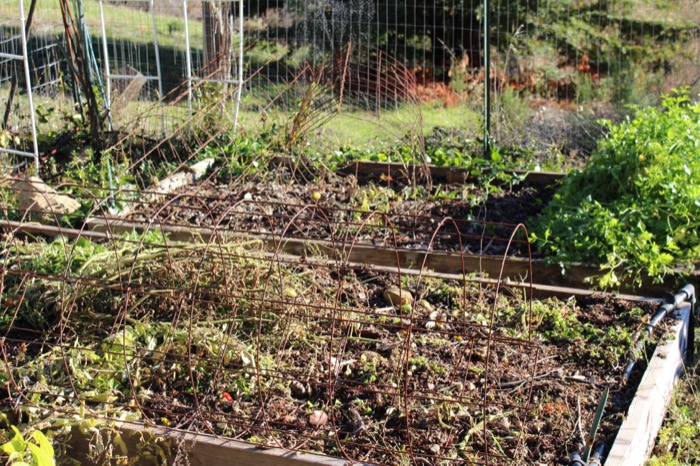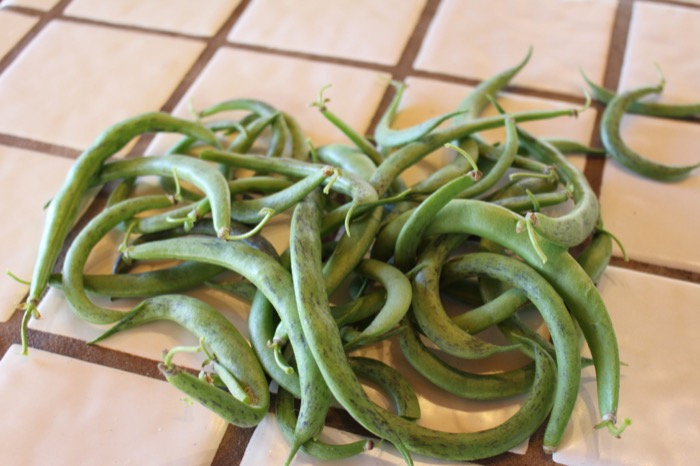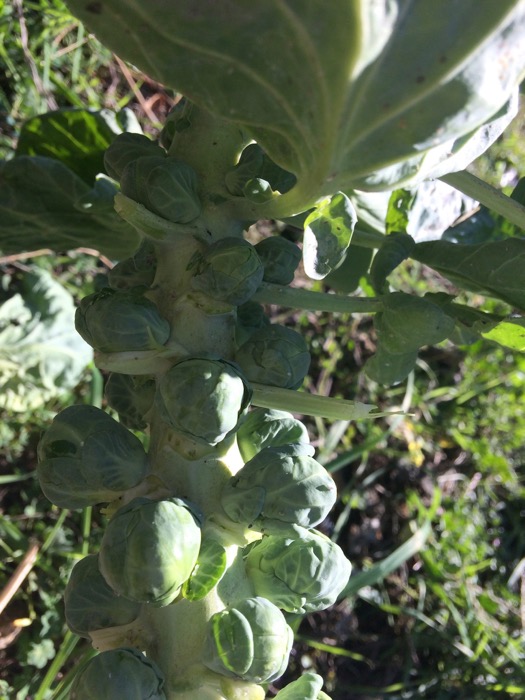Garden update: Green Beans and Persephone Days
15 Dec 2015There’s not much going on in the garden right now, given that it is so late in the year and the garlic is in. We’ve had a few frost and freeze days, which have killed most of the summer plants, although I still have some peppers holding on. It’s really not the prettiest time of the year for garden photos.

Usually this month I cut down and clean up all the old plants, stack and store the big tomato cages and other trellises, mulch all the beds, and get ready for next year. If I were better organized and did not pack the garden full to the top every year I would take the summer plants out earlier and put in cover crops. But in December it is usually too cold and too dark to be able to start anything growing — not even cold-tolerant, fast-growing peas or favas.
I did manage to plant some green beans late in the Fall, and those plants sprouted and grew and began to bear very quickly during our typically warm fall days. Green beans don’t like the cold, though, and they’ve been looking increasingly unhappy in the last few weeks. Today I pulled them all out and harvested a handful of green beans. Enough for a side dish. Now that I know I can plant beans this late, I’ll plant more next year.

I also picked all the brussels sprouts and cut the sprouts from the stems today. I haven’t been all that lucky with brussels in the past — it’s a really big plant, and it needs to go in pretty early in the year to be big enough to set sprouts. The plants I put in this year in March didn’t grow very big sprouts, but I had enough plants to harvest a couple pounds’ worth. I also learned this year that snapping or cutting the sprouts off the stem is a huge pain in the butt. All these issues make me want to re-examine whether I need to grow brussels again. It’s a lot of space and a lot of work for a vegetable that is not all that expensive already picked and packed in the store.

Left in the garden now are the cold-weather greens (kale, collards, chard), a whole lot of broccoli, a bed’s worth of carrots and beets I will harvest over the winter as I need them, a small bed of lettuce and salad greens, and the plant formerly known as cauliflower that looks like collards. None of these plants will grow a lot at this time of the year, but they can survive the cold weather just fine.
This dark time of winter is sometimes called the Persephone days, after the greek goddess who was imprisoned in the underworld during the winter months. It’s the time of the year when daylight falls below ten hours a day — at my latitude that’s from about November 20 to January 20. It may be longer if you’re in a more northern area (November 10 to February 2, in Boston), or not exist at all in the south (Houston day length never falls below 10 hours).
Plants don’t like to grow during the persephone days, entirely because of the lack of daylight. Even in a mild climate (which I have), or in a very warm winter (which I’ve often had), or in a greenhouse where you can control the warmth (which I don’t have….yet), everything goes dormant during the persephone days. Some farmers with greenhouses supplement with extra light and warmth for extra early vegetables, but I like to have a break and take some time off. Also: no greenhouse (yet).
Posted on 15 Dec 2015 • in blog •